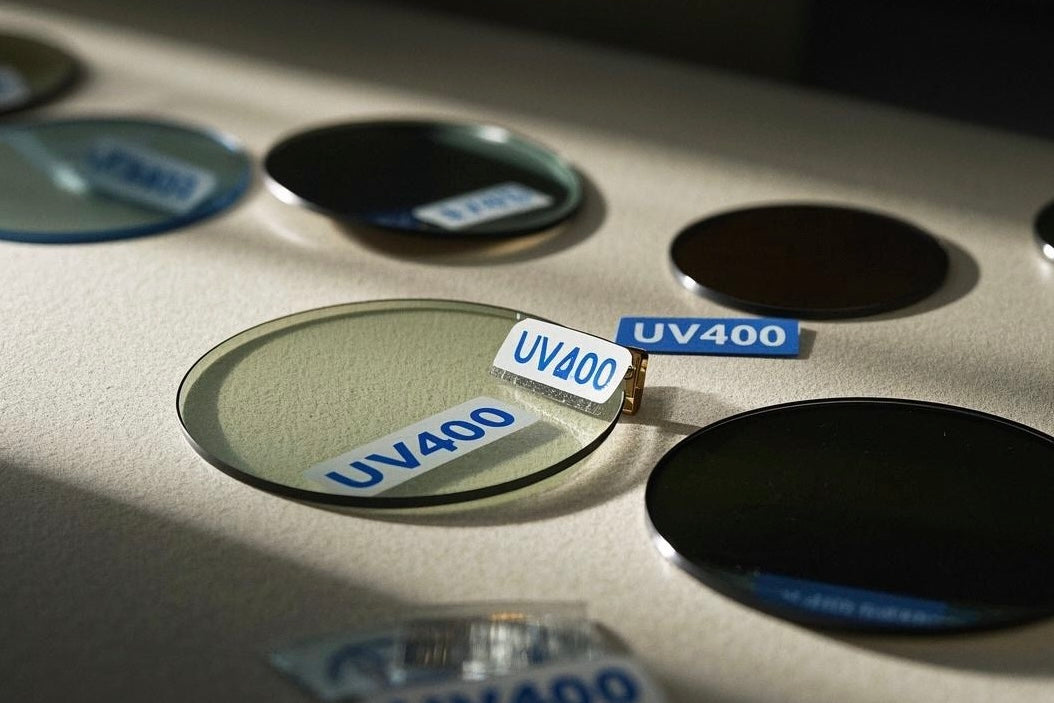
Understanding Sunglass Lenses: A Guide to UV Protection, Clarity&Performance
Share
Sunglasses are more than just a fashion statement—they are essential for protecting your eyes from harmful sunlight and enhancing visual comfort. But not all lenses are created equal. This guide breaks down the science behind sunglass lenses, helping you make an informed choice for optimal eye care.
1. UV Protection: The Non-Negotiable Feature
Why It Matters
Ultraviolet (UV) radiation from the sun can cause long-term eye damage, including:
- Cataracts – Clouding of the eye’s lens
- Macular Degeneration – Deterioration of central vision
- Photokeratitis – A painful "sunburn" of the cornea
What to Look For
- UV400 Protection – Blocks 100% of UVA & UVB rays (wavelengths up to 400nm).
- Polarized vs. Non-Polarized – Polarization cuts glare but doesn’t necessarily mean UV protection—always check for a UV400 label.
2. Lens Materials: Balancing Clarity & Durability
| Material | Pros | Cons | Best For |
|---|---|---|---|
| Polycarbonate | Lightweight, impact-resistant | Prone to scratches | Sports, active wear |
| CR-39 (Plastic) | Excellent optical clarity | Less durable than polycarbonate | Everyday use |
| Glass | Superior clarity, scratch-resistant | Heavy, can shatter | High-end fashion sunglasses |
| Trivex | Lightweight, impact-resistant, better optics than polycarbonate | Slightly more expensive | Premium performance sunglasses |
3. Lens Treatments & Coatings
- Anti-Reflective (AR) Coating – Reduces glare from behind (e.g., while driving at night).
- Mirror Coating – Reflects sunlight for extra brightness reduction (popular in snow/surf sunglasses).
- Hydrophobic/Oleophobic Coating – Repels water, oil, and dust for easier cleaning.
- Photochromic Lenses – Automatically adjust tint based on light conditions (great for variable environments).
4. Lens Colors & Tints: What Do They Do?
Different tints enhance vision in specific conditions:
- Gray – True color perception, ideal for general use.
- Brown/Amber – Enhances contrast, great for driving and outdoor sports.
- Green – Balances color accuracy and contrast, suitable for golf or tennis.
- Yellow/Orange – Improves depth perception in low light (e.g., fog, dusk).
- Blue/Purple – Mainly for style, minimal functional benefit.
5. Polarized Lenses: Worth the Hype?
✅ Pros:
- Eliminates glare from reflective surfaces (water, snow, roads).
- Reduces eye strain in bright conditions.
❌ Cons:
- Can make LCD screens (phones, dashboards) harder to see.
- Doesn’t automatically mean UV protection—always check for UV400.
Best for: Driving, fishing, skiing, and beach activities.
6. Choosing the Right Sunglasses for Your Needs
- Everyday Wear → Gray or brown lenses, UV400, lightweight frame.
- Sports & Outdoor Activities → Polarized, polycarbonate/Trivex lenses, wraparound design.
- Driving → Polarized brown/amber lenses to reduce road glare.
- Fashion → Glass or high-clarity plastic with mirror/AR coatings.
Final Tip: Quality Matters
Cheap sunglasses may lack proper UV protection, causing your pupils to dilate and absorb more harmful rays. Always buy from trusted brands (like ULUCKOO) that certify their lenses for 100% UV blockage.
Protect your eyes—see the world clearly!
Would you like recommendations based on a specific activity or style? Let us know!
